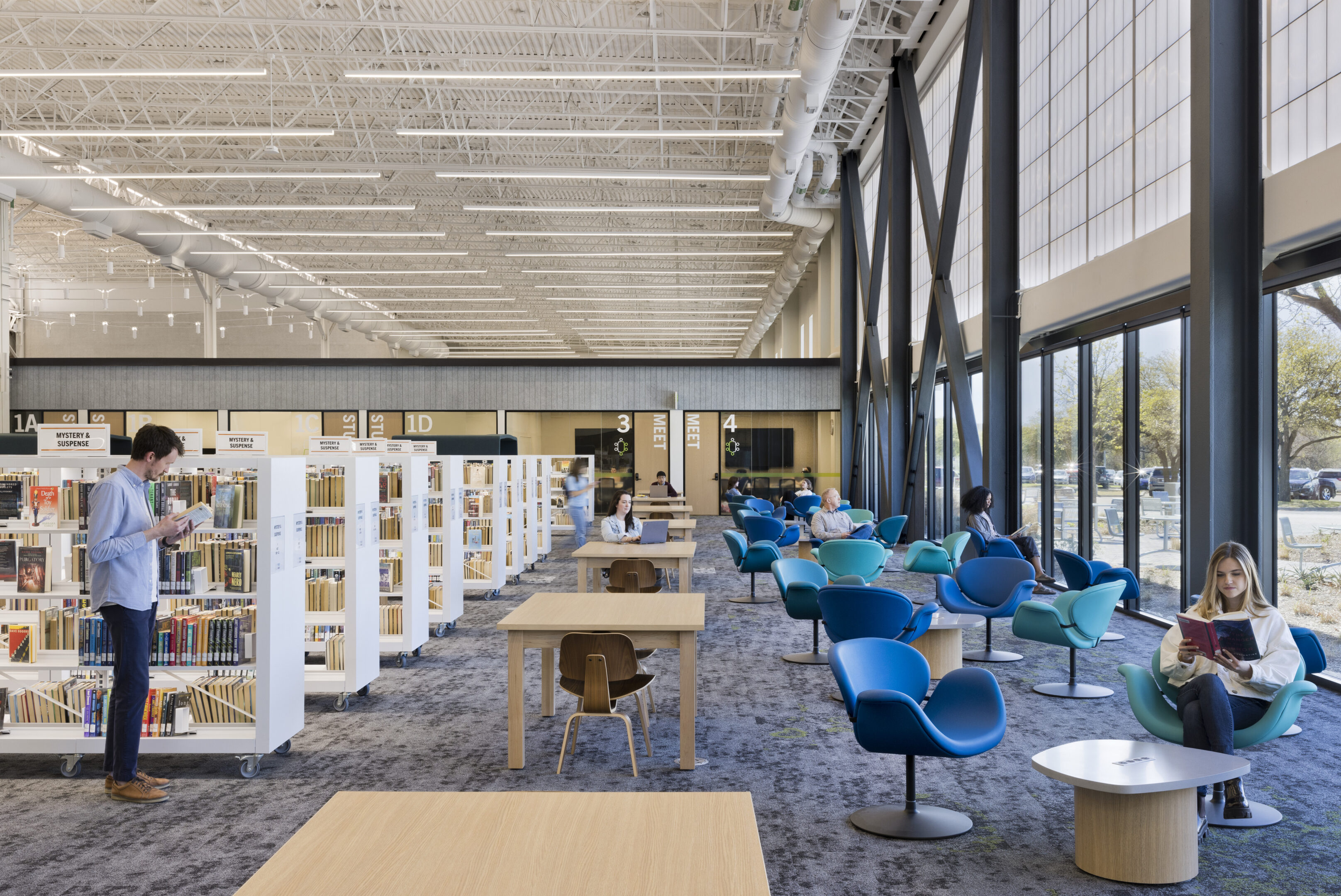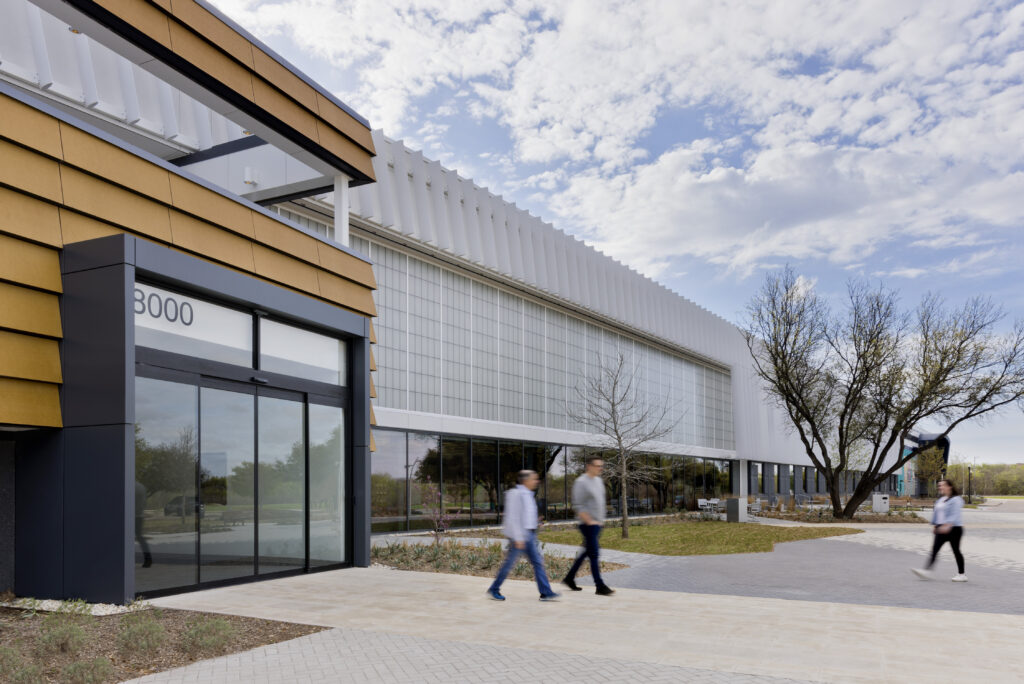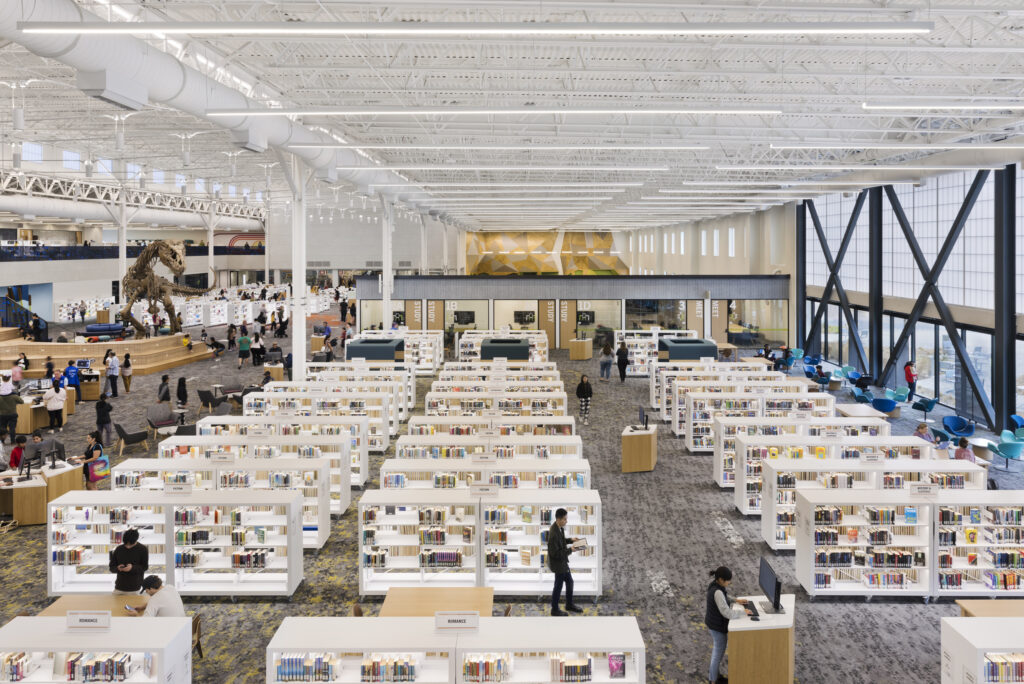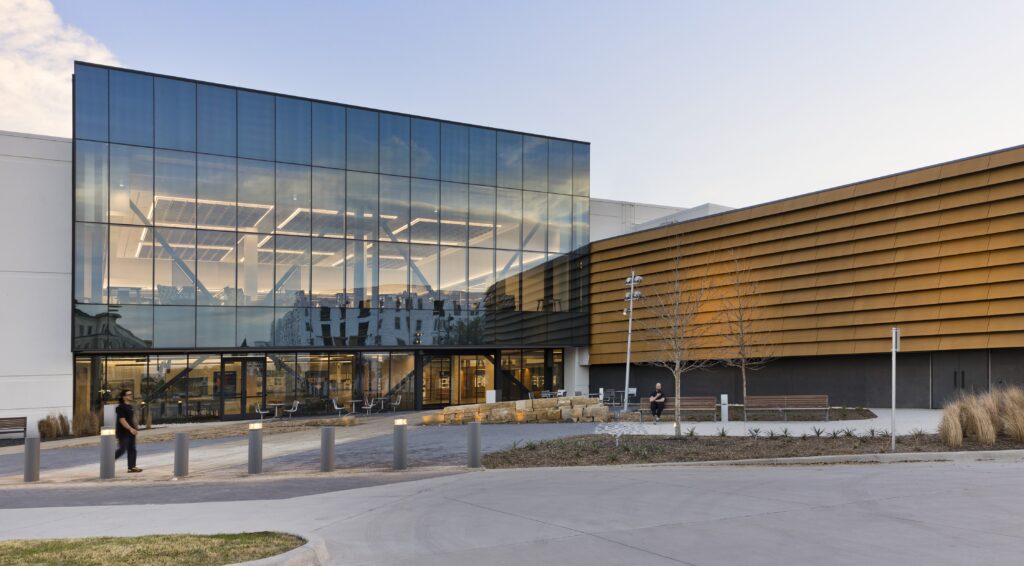Frisco Public Library
 By Connie Zhou
By Connie Zhou
The Frisco Public Library in Frisco, Texas, is an innovative example of the adaptive reuse of a building typology not often associated with libraries.
A mundane, boxy tilt-up structure, the building was originally a rocket assembly facility designed for satellite delivery. The library’s unique lighting is a prime example of creative problem-solving that preserves the existing structure’s integrity while meeting specific requirements for lighting levels.
Adapting and overcoming design challenges through an elegant detail is something that many of us as architects love to see.

The original building’s design, with its 11-inch thickened slab, tilt-up concrete exterior walls, high bay clerestory window ribbon, and metal roof supported by metal trusses, was constructed with maximum efficiency in mind. However, this efficiency created a challenge for the library’s lighting needs. The existing roof structure had minimal capacity to support added weight, making it imperative that the design team produce a solution that met the desired illumination levels without compromising the structural integrity.
The library’s architecture presented both opportunities and constraints. The high bay clerestory window ribbon allowed natural light to filter into the space, creating a pleasant, diffused illumination. Still, additional artificial lighting was essential to having consistent brightness throughout the library, especially during dark or overcast days.
After careful consideration, the design team arrived at an innovative solution: a catenary lighting system. This not only ensured that the weight of the lighting system did not overburden the roof structure but also capitalized on the surplus load-bearing capacity of the building’s columns.

The catenary lighting system allowed the lighting fixtures to be installed at a considerable height within the space, which, in turn, allowed the light to mix and spread evenly across the entire library. The result is a well-lit space that is evenly balanced, reducing the strain on visitors’ eyes and creating a comfortable, inviting atmosphere. This is particularly important in a library, where people spend extended periods of time reading, studying, or working on various tasks.
The success of the catenary lighting system goes beyond its practical benefits. It also contributes to the library’s overall aesthetic appeal. The lighting fixtures themselves become a design element, adding visual interest to the space. Suspended from the catenary system, they form a unique and engaging optical feature in the library’s interior.
Further, the catenary lighting system casts a small amount of light upward, illuminating the field of trusses that support the roof. This serves a functional purpose by unifying the background of the library and highlighting the building’s industrial heritage. The interplay of light and shadows on the trusses creates a captivating display, reinforcing the library’s status as a space where old and new coexist harmoniously.

The success of the Frisco Public Library’s unique lighting demonstrates the importance of thoughtful design and adaptability when repurposing structures. By recognizing the limitations of the original building and finding innovative ways to address them, the design team transformed a utilitarian structure into a welcoming, well-lit space.
Not only is the Frisco Public Library one of the best-lit libraries in Texas, but it is also a shining example of how architectural innovation can create a functional, visually captivating environment. The catenary lighting system serves as a beacon of creativity, showcasing how an intelligent lighting approach simultaneously meets practical needs and enhances the overall experience for library patrons.
Project Leads: Justin Bashaw, Design Director; Brian Nicodemus, Project Manager and Project Architect

Correction Notice: This article was incorrectly attributed to Luke Archer in the June 2024 Columns Newsletter.